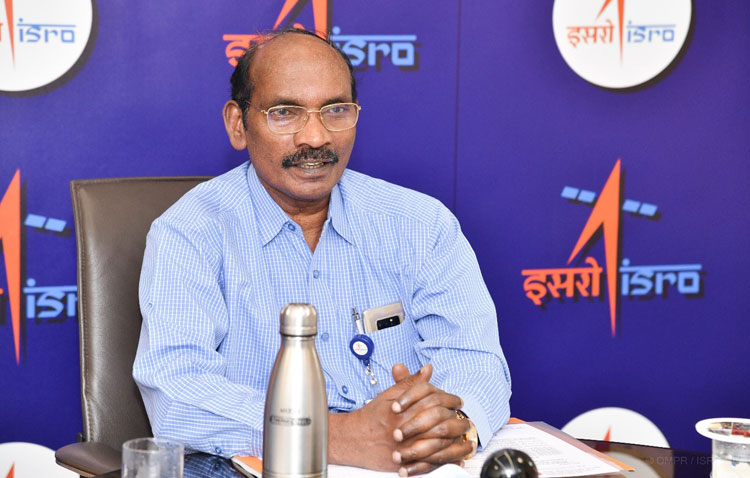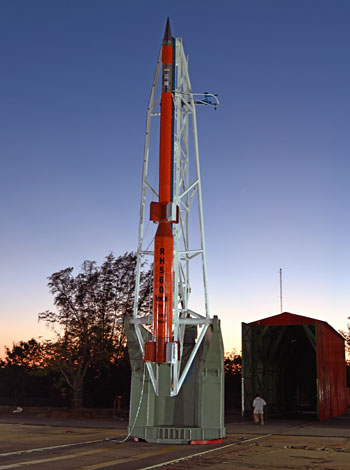INDIAN ARMED FORCES CHIEFS ON OUR RELENTLESS AND FOCUSED PUBLISHING EFFORTS

The insightful articles, inspiring narrations and analytical perspectives presented by the Editorial Team, establish an alluring connect with the reader. My compliments and best wishes to SP Guide Publications.

"Over the past 60 years, the growth of SP Guide Publications has mirrored the rising stature of Indian Navy. Its well-researched and informative magazines on Defence and Aerospace sector have served to shape an educated opinion of our military personnel, policy makers and the public alike. I wish SP's Publication team continued success, fair winds and following seas in all future endeavour!"

Since, its inception in 1964, SP Guide Publications has consistently demonstrated commitment to high-quality journalism in the aerospace and defence sectors, earning a well-deserved reputation as Asia's largest media house in this domain. I wish SP Guide Publications continued success in its pursuit of excellence.
- Prime Minister Modi Visits Punjab’s Adampur Air Base, Interacts with Airmen after Successful ‘Operation Sindoor’; Stern Message to Pakistan
- The layered Air Defence systems that worked superbly, the key element of Operation Sindoor
- Operation Sindoor | Day 2 DGMOs Briefing
- Operation Sindoor: India strikes back with Precision and Purpose
- Operation Sindoor: Resolute yet Restrained
- India’s Operation Sindoor Sends a Clear Message to Terror and the World – ‘ZERO TOLERANCE’
- Japan and India set forth a defence cooperation consultancy framework, talks on tank and jet engines
- Terrorist Attack in Pahalgam in Kashmir: Unfolding a long surgical war against PAK
- Lt General Pratik Sharma takes over Command of Indian Army's Northern Command
ISRO continues to collaborate and breakthrough
The Indian space agency has signed bilateral MoUs to set up incubation centres & successfully demonstrate country’s first free-space quantum communication over 300 metres.

After successfully conducting its first launch of this year on February 28, 2021 with the launch of the first Brazilian Satellite from India, India’s space agency is further strengthening space collaboration with its global partners. In the past few days, Chairman of the Indian Space Research Organisation (ISRO), Dr. K. Sivan had signed multiple Memorandums of Understanding (MoU).
Earlier this month, Dr. Sivan met with the President of Japan Aerospace Exploration Agency (JAXA) Dr. Hiroshi Yamakawa. The bilateral meeting between was held on March 11, 2021 virtually.
Bilateral meeting between ISRO and @JAXA_en was held on March 11, 2021 on virtual mode. On this occasion, both agencies signed an Implementing Arrangement for collaborative activities on rice crop area and air quality monitoring.
— ISRO (@isro) March 11, 2021
More details: https://t.co/sJbTfz0RlS pic.twitter.com/52G5752I1J
Apart from reviewing on-going cooperation in earth observation, lunar cooperation and satellite navigation, both sides agreed to explore opportunities for cooperation in space situational awareness and professional exchange programme. On this occasion, both agencies signed an Implementing Arrangement for collaborative activities on rice crop area and air quality monitoring using satellite data. It’s been almost five years since JAXA and ISRO signed an MOU for collaboration.
Almost 5 yrs since JAXA and ISRO (India) signed an MOU for collaboration. On 3/11, JAXA President YAMAKAWA and ISRO Chairman Sivan discussed progress being made on various projects, including those related to lunar surface exploration and agricultural use of satellite data. pic.twitter.com/SL7OUGlEZW
— JAXA Washington DC (@jaxa_wdc) March 17, 2021
Last week, Dr. Sivan, who is also the Secretary of Department of Space (DoS) met with Prince Sultan bin Salman bin Abdul Aziz, Chairman of the Board of Directors of Saudi Space Commission. This bilateral meeting was also held virtually on March 17, 2021 on initiating the space cooperation in areas of mutual interest. The possibility of concluding country level MoU for space cooperation was also discussed.
Bilateral meeting @isro and Saudi Space Commission was held on March 17, 2021 on virtual mode. Both had discussions on initiating the space cooperation in areas of mutual interest.
— ISRO (@isro) March 18, 2021
Details: https://t.co/4fXN7tcghT pic.twitter.com/eW8UVHnY6u
Inauguration of Space Technology Incubation Centres
After these, ISRO has also signed bilateral MoUs with chief institutes and Dr. Sivan has inaugurated three Space Technology Incubation Centres, dedicating them to the nation on March 18, 2021, in an online programme held amongst ISRO and National Institutes of Technology (NITs). The bilateral MoUs were signed with Visvesvaraya National Institute of Technology, Nagpur, Maulana Azad National Institute of Technology, Bhopal, and National Institute of Technology, Rourkela for setting up the Space Technology Incubation Centre (STIC) in their campus.
ISRO and JAXA signed an Implementing Arrangement for collaborative activities on rice crop area and air quality monitoring using satellite data.
On this occasion, the Chairman briefed about STIC programme and encouraged students to explore their entrepreneurship skill in space domain.In his presidential address, he especially emphasised that the S-TIC concept is conceived with one selected major academic institute taking the lead role in a particular region and providing opportunities for final year graduate, post–graduate and research scholars as future entrepreneurs. Projects of practical relevance linked to the ongoing missions or future missions of ISRO will be made available to the students at STIC. The plan is also to translate the research outcome of these students into a Proof-of-Concept or prototype through industries within their region.
R. Umamaheswaran, Scientific Secretary, ISRO highlighted the need for inter-disciplinary approach and close team work among various disciplines of Science and Technology for accomplishing the objectives of STIC. He further stated,“The setting up of the STICs, one each at VNIT Nagpur, MANIT Bhopal and NIT Rourkela, will be a major boost up for space related activities in these regions. I am hopeful these STIC will produce many space entrepreneurs and space leaders, who will potentially be able to mark the human foot prints in deep space.” He further asserted that the saplings, we are planting in form of STIC at these institutes have a great potential to grow as a big tree, firmly establishing its roots in deep depth of knowledge in the domain of Space Science and Technology.
Chairman, ISRO also virtually met with Prince Sultan bin Salman bin Abdul Aziz, Chairman of the Board of Directors of Saudi Space Commission.
The MoU was signed in an online mode from ISRO’s side by Dr. P.V. Venkitakrishnan, Director Capacity Building Programme Office, ISRO Headquarters and Prof. Pramod Madhukarrao Padole, Director, VNIT, Nagpur from VNIT’s side; Prof. Narendra Singh Raghuvanshi, Director, MANIT, Bhopal from MANIT’s side; and Prof. Animesh Biswas, Director, NIT Rourkela from NIT Rourkela’s side, in the presence of R. Umamaheswaran, Scientific Secretary, ISRO and Dr. K. Sivan, Chairman ISRO / Secretary DOS.
The STIC at VNIT Nagpur will be the focal centre for western region of space technology incubation activities including the states of Gujarat, Maharashtra, Rajasthan and UTs of Dadra & Nagar Haveli and Daman & Diu. Similarly, STIC at MANIT Bhopal will be the focal centre for space technology incubation activities including the states of Chhattisgarh, Madhya Pradesh and Uttar Pradesh. The STIC at NIT, Rourkela will be the focal centre for eastern region of space technology incubation activities including the states of Bihar, Jharkhand, Odisha, West Bengal and UT of Andaman & Nicobar.
ISRO has also signed bilateral MoUs with chief institutes and Dr. Sivan has inaugurated three Space Technology Incubation Centres
This is a significant step as with setting up of these three new STICs, the goal of opening one STIC in each of the six regions of the country has been accomplished by ISRO. At present three STICs have already been functioning, one at NIT, Agartala for North-Eastern region, one at Dr. B R Ambedkar NIT, Jalandhar for Northern region and at NIT, Tiruchirappalli for Southern region.
YUKTI-Sanchita
Dr. Sivan also released YUKTI-Sanchita 2021 (Youth Upgradation by Knowledge Transformation through Incubators - Sanchita), a compilation of 108 product development as well as innovative project proposals from centres, labs, and units of DOS, ISRO.
Dr. K. Sivan, Chairman, ISRO / Secretary, DOS inaugurates 3 Space Technology Incubation Centres and releases ??????-?????? YUKTI- Sanchita 2021
— ISRO (@isro) March 18, 2021
More Details at: https://t.co/KaMNxnk2Rb pic.twitter.com/9G7fEmW9cz
Dr. Sivan also released YUKTI-Sanchita 2021, a compilation of 108 product development as well as innovative project proposals from centres, labs, andunits of DOS, ISRO.
It can be referred by the academia, the industry as well as the start-ups to prepare a detailed proposal for execution of the projects. Jiwan Kumar Pandit, Associate Director, CBPO, ISRO headquarters mentioned this as one of the major steps by DOS/ISRO to achieve the development and indigenisation of space grade components/products/processes in tandem with objectives of “Atmanirbhar Bharat”.
Chandrayaan-3
Recently, on Wednesday, the Minister of Space for the Department of Space, Government of India, Jitendra Singh revealed that ISRO plans to launch its third mission to the moon next year. This was released in a written response to a question in the Lok Sabha. ISRO had earlier planned to launch the Chandrayaan 3 mission either in late 2020 or early 2021 but most missions were rescheduled due to the Covid-19 pandemic. "The integrated spacecraft is being realised for planned launch during 2022. The spacecraft is in advanced stages of realisation, with the propulsion system already built and undergoing tests. The lander structure has also been built and is currently being fitted with its propulsion system," Singh said.
Breakthrough demonstration of free-space Quantum Key Distribution
However, there are many other missions and constant tests through which ISRO is continuously boosting the space sector and indeed steering a new age for the industry. Just this week on March 22, 2021, ISRO made a breakthrough demonstration of free-space Quantum Key Distribution (QKD) over 300 metres.
For the first time in the country, ISRO has successfully demonstrated free-space Quantum Communication over a distance of 300 m.
— ISRO (@isro) March 22, 2021
For details visit: https://t.co/6o5qDoAP1Q pic.twitter.com/9NdNrASQWr
This is for the first time in the country that ISRO has successfully demonstrated free-space Quantum Communication over a distance of 300 metres. What makes it more significant is that a number of key technologies were developed indigenously to accomplish this major feat, including the use of indigenously developed NAVIC receiver for time synchronisation between the transmitter and receiver modules, and gimbal mechanism systems instead of bulky large-aperture telescopes for optical alignment. NAVIC (NAVigation with Indian Constellation) is the official name for the Indian Regional Navigation Satellite System (IRNSS).
On March 22, 2021, ISRO made a breakthrough demonstration of free-space Quantum Key Distribution (QKD) over 300 metres.

The demonstration of free-space QKD has included live video conferencing using quantum-key-encrypted signals. This is a major milestone achievement for unconditionally secured satellite data communication using quantum technologies.
The QKD technology underpins Quantum Communication technology that ensures unconditional data security by virtue of the principles of quantum mechanics, which is not possible with the conventional encryption systems. The conventional cryptosystems used for data-encryption rely on the complexity of mathematical algorithms, whereas the security offered by quantum communication is based on the laws of Physics. Therefore, quantum cryptography is considered as 'future-proof', since no future advancements in the computational power can break quantum-cryptosystem.
The free-space QKD was demonstrated at Space Applications Centre (SAC), Ahmedabad, between two line-of-sight buildings within the campus. The experiment was performed at night to ensure that there is no interference of the direct sunlight.
The experiment is a major breakthrough towards ISRO’s goal of demonstrating Satellite Based Quantum Communication (SBQC), where ISRO is gearing up to demonstrate the technology between two Indian ground stations.
Earlier this month ISRO had also carried out the launch of sounding rocket (RH-560) to study attitudinal variations in the neutral winds and plasma dynamics at Satish Dhawan Space Centre (SDSC) SHAR, Sriharikota.





